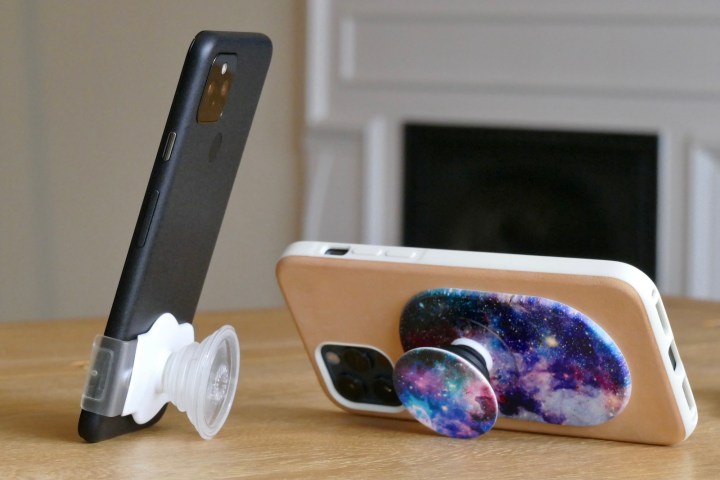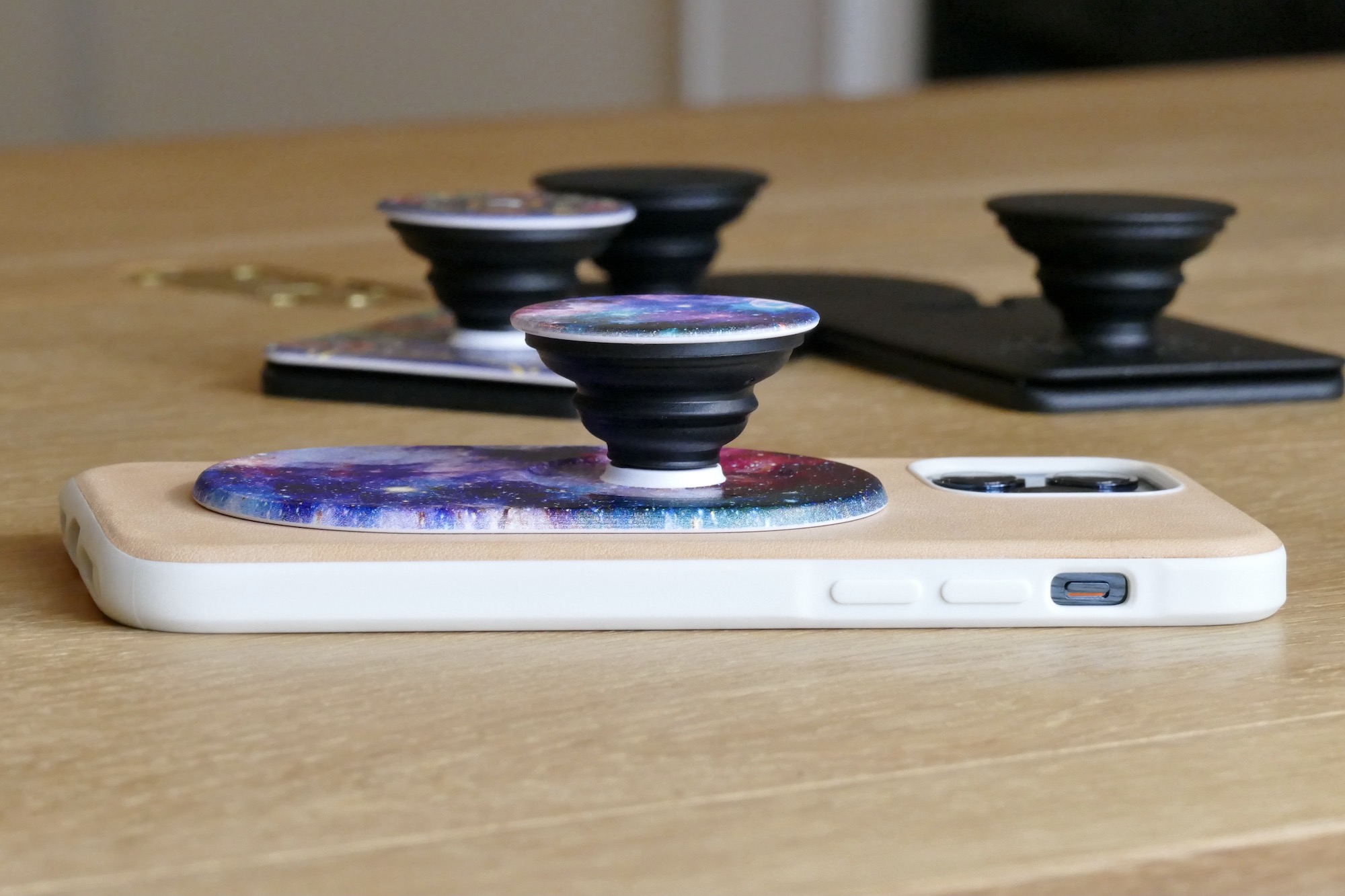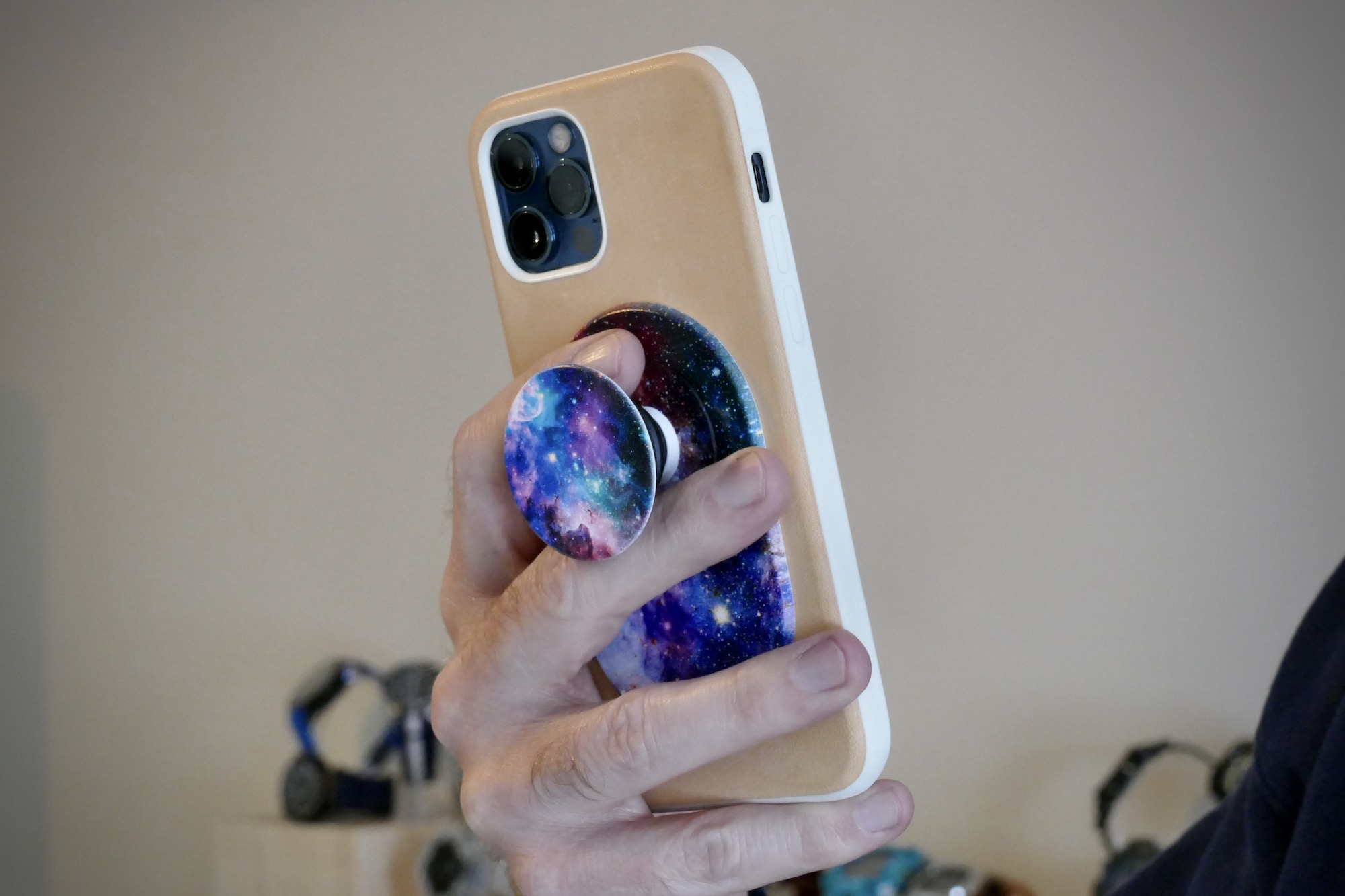I have a love/hate relationship with the regular PopSocket PopGrip. I love what they do — make my phone easier to hold and use with one hand — but I hate that it had to be stuck to the back of my phone or case. When Apple introduced MagSafe, PopSocket confirmed it was working on a compatible product, and my interest was well and truly piqued. It seemed like a perfect match, as the sticky pad was no longer needed.
The PopGrip for MagSafe and PopWallet+ for MagSafe are now here, so have they lived up to expectation?
PopGrip for MagSafe
The PopGrip for MagSafe is a take on the familiar PopGrip but without the sticky pad, or any of the permanence associated with it, and in my eyes, that makes it considerably better than ever before. Maybe the PopGrip’s need to stick to your phone is a problem for me because I change phones most weeks, but it’s also a problem for anyone who changes phone cases regularly too. All this is (mostly) gone with the MagSafe version.

Rather than just being the “grip” part, the PopGrip for MagSafe has a large baseplate section containing the magnets needed to attach to your iPhone. The extendable grip is unchanged from previous versions. PopSocket recommends using the PopGrip with a MagSafe case, presumably to increase magnetic strength, meaning you’ll have to get one if you don’t have one already, and when you change cases in the future it will have to be a MagSafe compatible one again.
Is the PopGrip firmly attached? Yes, it has a limpet-like grip when used with Nomad’s Rugged MagSafe case, and the leather back helps keep it centered too. It feels a little less secure when used with Apple’s clear MagSafe case, but it has a more precise way of “clicking” into the center position. I’m not entirely sure why you shouldn’t use the PopGrip for MagSafe without a case, as it still feels just as secure on the back of the phone.
The grip section is positioned centrally on the back of the phone and there’s no way to alter it, so if you prefer the PopSocket to be set on the lower half of your phone, you’re out of luck here. The PopGrip for MagSafe must also be removed before using a MagSafe charger, and it should go without saying that you shouldn’t hold your phone by the PopGrip for MagSafe either, although I’m impressed by the amount of hold it actually has.
There are four colors available, the Nebula and black versions seen here, plus an Opal and Gold Lutz Marble. All cost $30.
PopWallet+ for MagSafe
The PopWallet+ for MagSafe is very similar to the PopGrip, as it incorporates the PopGrip part with a flat baseplate containing the magnets for MagSafe attachment. Except this time the baseplate contains a wallet large enough to hold three cards inside. It’s lined with a stretchy elastic, which is exposed at the bottom of the wallet section so you can push the cards out the top.

Cards are entirely hidden inside the PopWallet+ which is good for security as a casual glance doesn’t quickly reveal there are cards stuck to the back of your phone, and the case is magnetically shielded so your cards don’t get ruined. Although three cards fit inside the case, it is easier to push them free when only two are placed inside.

Like the PopGrip it’s recommended you use the PopWallet+ with a MagSafe case, and you need to remove it from the phone to use a MagSafe wireless charger. It costs $40 and comes in black, Blush Pink, Floral Bohemian, Deep Periwinkle, and Rose Gold Lutz Marble. Both it and the PopGrip are compatible with all interchangeable PopTops and PopMount products, and work with the iPhone 12 Mini, iPhone 12, iPhone 12 Pro, and iPhone 12 Pro Max.
Worth it?
MagSafe adds flexibility to the humble PopGrip. If you don’t want to use it, it’s quickly removed, and if you change your case it doesn’t mean you have to buy another PopGrip. However, this comes at the expense of being able to place the PopGrip in the location you want on the back of your phone. It’s mounted centrally, and the location of the MagSafe magnets inside the iPhone mean that’s where it must stay.

This did impact how helpful I found them. I couldn’t use the PopGrip to stand the iPhone up in portrait orientation for video calls, but it works fine for landscape video viewing. The central placement makes one-hand typing a little awkward, especially if you have small hands, which is often a reason for buying a PopGrip in the first place.

Interestingly, I found both these problems were solved by another new PopSockets product: the updated PopGrip Slide Stretch. It doesn’t use a sticky pad or MagSafe technology. Instead, it grips the sides of your phone, and can be slid up and down the body giving more control over its placement. It fits many phones, even a case-less Google Pixel 5, is much cheaper than the MagSafe products at $15, and can be removed when you don’t want it. Use it with an iPhone 12 and it acts as a stand when using the MagSafe wireless charger too.
PopSockets MagSafe products use Apple’s new magnetic feature very effectively, but are slightly compromised by the restrictions of the system itself, taking away some of the benefits of the pure, basic PopGrip product. However, if you’re happy with the compromises, the PopGrip for MagSafe and PopWallet+ for MagSafe are often useful, fun, customizable, and well-designed products that use MagSafe in an interesting way.






